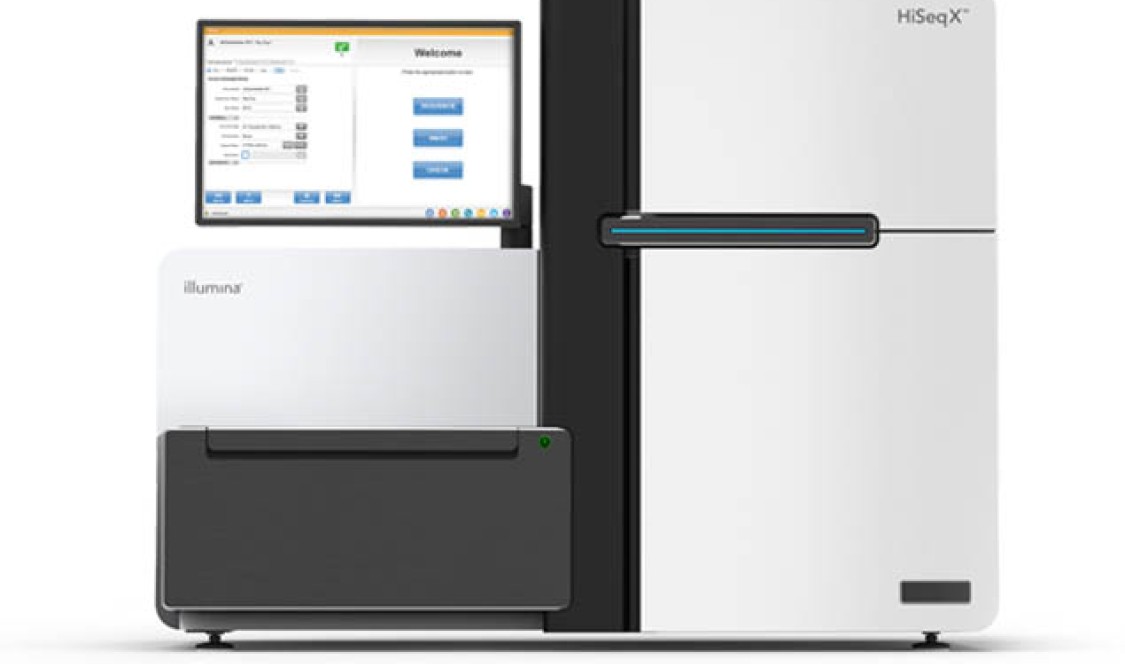It’s not hard to imagine this as a sci-fi movie, maybe Tom Cruise is the hero, trying to out-maneuver a team of scientists who are trying to steal his genome. It's embedded in a microchip he’s locked into his briefcase, and maybe the science folk want to replicate a rare genetic variant of his for––uh––not-so-noble biomedical reasons. That you could carry your genome––your entire genetic makeup–– in the palm of your hand may sound more light years away than palpably present. Or that variables in a person’s DNA are just a touch-screen-swipe away… (Really?) Really.
CMC alumnus Jay Flatley ’74 P’03 is among those on the frontline of this rapid acceleration in biotechnology. As CEO of Illumina, a multiple Fortune “Fastest-Growing” Company designee, Flatley is helping guide the production of machines dominating the genome-sequencing market. These are the machines, essentially, that are making it possible to collect, analyze, and apply a person’s full biological information. This sequencing has been particularly helpful in managing the care of cancer patients. “Cancer is a disease of the genome,” Flatley says. “Once you understand the mutation patterns of cancer, you have a much broader tool set to go and attack that disease.”
Illumina’s new HiSeq X (“High Seek 10”), in fact, is reported to be the “world’s first DNA-crunching supercomputer,” designed to make genome sequencing more affordable than it’s been. According to Bloomberg Businessweek, the price tag for sequencing a human genome is currently $10,000. With HiSeq X’s arrival, the price will drop to $1,000 in a few years, says Flatley, who was featured in the magazine’s Jan. 15 Technology section.
(Read the full interview with Bloomberg Businessweek writer Ashlee Vance.)
In a video accompanying the Bloomberg story, Flatley says getting the price of genome sequencing to a psychologically comfortable number was crucial––especially in terms of market expansion. “If you think about it, if you can get the right treatment to a patient for under $5,000, compared to the cost of getting the wrong treatment--and many of the cancer drugs today cost $5,000 to $10,000 a month--the health-economic benefit of that is enormous, not to mention the benefit to the patient in getting a drug prescribed that is actually going to have some positive effect on that patient.
“We think sequencing is going to become absolutely pervasive,” Flatley says. “And clearly that’s our goal as a company, to provide technologies that span the breadth requirements of the market, and have features that apply to all of the different market segments.”
Believe it or not, there’s also––yes––an app for that, which is why that technology is a swipe away. Illumina’s developed an app that allows a person to carry their whole human genome on their iPad, to share with physicians. (Flatley revealed some of that technology during a genome symposium in 2012. Watch it on Youtube.) The app is attempting to make user-friendly a massive amount of data that most physicians and consumers don’t yet know how to interpret.
Flatley visited CMC in 2012 and spoke at the Athenaeum. (Watch his presentation.) He was an economics-engineering major while at CMC and after three years, transferred into the industrial engineering program at Stanford, which enabled him to earn undergraduate degrees from both schools, while simultaneously working toward his master’s at Stanford.
“My CMC education was at least as important, if not more important, than the engineering work I did at Stanford,” he has said. He initially planned to be a management consultant, but during a job fair, his last interview was with a small laser company, and he ended up taking the offer. “It was the first time I had ever met someone who was an entrepreneur,” Flatley said of the mid-1970s. “We didn’t have classes in entrepreneurship back then… I got the bug and … decided to take the plunge and go into a small company.
The job would expose him early in his career to many different disciplines, including his first foray into the life sciences in 1987. In summer 1999, he joined San Diego-based Illumina, which was then developing micro rays. The company went public in 2000, raised $100 million, and enlisted a team of 40 people “three years away from our product––something you could never do today,” he said.
Matthew Ferber, director of the Molecular Genetic Laboratory at the Mayo Clinic, attended the 2012 genome symposium with Flatley.
“We recognize how absolutely transformational this next generation sequencing will be to the clinical process,” Ferber said. “This is akin to landing on the moon. We are actually going to transform medical care with this discovery.”

